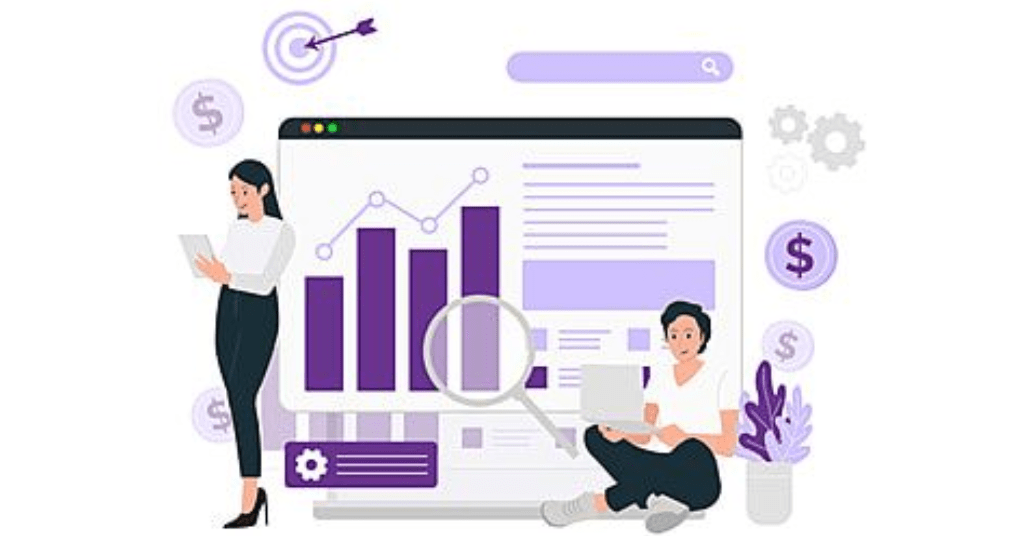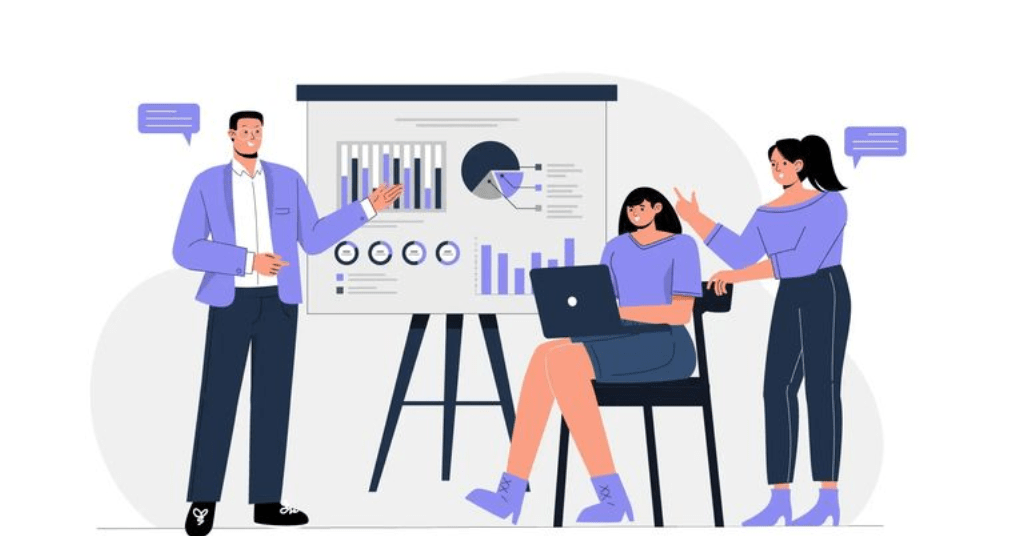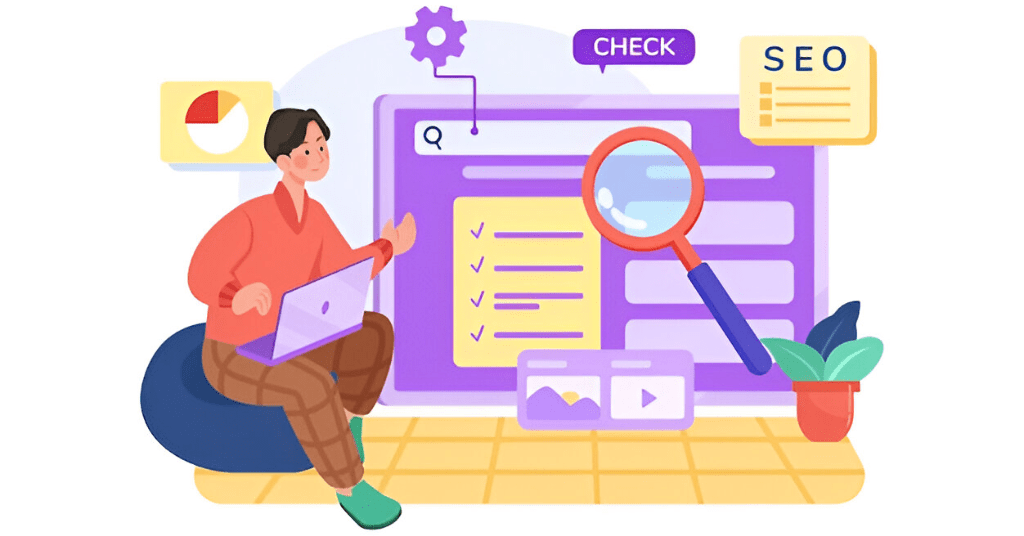How to Optimize Your Content for Google SEO You Know Need – Search engine optimization (SEO) is essential to have your content listed on Google. Without optimization, your content will never be seen by the targeted individuals. Google updates its algorithm occasionally, and therefore it is essential to keep up with the present SEO techniques. The purpose of SEO is to increase the visibility of your site in search results, which generates organic traffic and enhances engagement. Content optimization is not keyword stuffing alone; it is also structuring your content, making it readable, and having your site technically optimized for SEO. Google values content that is valuable, user-centric, and aligned with search intent. If your content’s irrelevant or hard to find, it will not rank well.
This guide will walk you through the basics of content optimization. You will discover Google’s ranking signals, keyword research, on-page, and Technical search engine optimization, off-page SEO, and how to measure your success. Whether you are a beginner or want to optimize your SEO approach, this guide will assist you in developing high-ranking content that draws and engages visitors.
How to Optimize Your Content for Google SEO You Know Need –
Understanding Google’s Ranking Factors –
Google employs more than 200 ranking signals to ascertain what to display at the top of search engine results. The most important among them are E-E-A-T (Experience, Expertise, Authoritativeness, and Trustworthiness). Google prefers information from authoritative sources that is good for insights.

Google’s Ranking Factors
Search intent and keywords come into play as well. Google evaluates how closely your content is aligned with the queries of the users. Your content does not rank well if it fails to match the search intent. Moreover, User experience (UX), or Mobile-friendliness, Page speed, and navigation, also weigh in on rankings. Poor UX sites have poor bounce rates, decreasing their visibility in search results. Domain authority and Backlinks also play a part in Google’s algorithm. When other high-quality websites link to your content, then Google receives a signal that your site is trustworthy. Additionally, technical aspects such as HTTPS encryption, clean URL structures, and well-structured data have impacts on the way search engines crawl and index your pages. Understanding these ranking factors helps produce content that meets Google’s requirements. Focusing on Quality content, excellent User experience, and Authority-building methods can help improve your potential for ranking higher on search engine results.
Keyword Research: Finding the Right Keywords –
Keyword research is the backbone of SEO. Performing keyword research means you get to understand what your audience desires and create content fulfilling their intention. With the correct keywords, one has a greater chance of having good ranking within the search engines. Begin with keyword research tools such as Google Keyword Planner, Ahrefs, or SEMrush and enter relative keywords. Use long-tail keywords (for instance, “Best SEO strategies for Small Businesses“) as they are less competitive and are more likely to convert. Search intent also plays a role check if the users want information, comparison, or purchase.

Finding the Right Keywords
Put the keywords organically in your title, headings, meta description, and body text. Do not stuff keywords since Google will heavily penalize highly optimized content. Use variations and synonyms instead to get the organic flow going. Competitor analysis is another successful strategy examining top-ranked pages can give you a sense of the keywords that they are optimizing for and in what type of content. Through choosing high-impact keywords and strategic placement there on within your content, you can improve search engine ranking as well as build targeted traffic.
Crafting High-Quality, Engaging Content –
Google likes easy-to-use content. It is very important to create good content to rank at the top in search results. Begin with an intriguing introduction that will interest the reader and inform him about what the article is about. Use simple headings (H1, H2, H3) and clearly defined formatting for better readability. Keep short, uncomplicated, and filled-with-useful-tips paragraphs. Make use of bullet points, lists, and pictures to separate text and improve user experience.

High-Quality, Engaging Content
Make sure your content addresses the questions your audience has. The more useful your content is, the longer users will remain on your page, which will tell Google that your page is useful. Providing examples, Case studies, and real-life scenarios adds even more credibility. Engagement is also involved in the game of SEO. Engage the users and force them to comment, share, or like your content. By providing well-informed and interactive content which is delivered as expected by the user, you maximize the potential of ranking higher on Google.
On-Page SEO: Optimizing Content for Google –
On-page optimization gets your content ready for search engine visibility. Title tag optimization with key words in an easily accessible format is the first step. The Meta description will have to be shortened to provide a summary of your content within the 150–160-character limit in a natural sentence format using keywords within the sentence. Good use of header tags (H1, H2, H3, etc.) will also ensure accessibility of your content with the help of search engines towards hierarchy comprehension as well.

Optimizing Content for Google
Make sure that your content is readable using keywords without compromising readability. Internal linking to other similar content on your site is also done for ease and to send users to read other articles. Images are also part of on-page SEO. Add alt tags to label images for accessibility and search ranking. Mobile-friendliness is also Google’s preference since it crawls mobile first. By implementing these on-page SEO techniques, you can enhance the visibility of your content, enhance Search engine rankings and User experience.
Technical SEO for Content Optimization –
Technical SEO is about making the back-end of your website crawl and index more efficiently by search engines. Website speed optimization is required because slow websites tend to have increased bounce rates. Test performance with tools like Google Page Speed Insights and resolve loading issues.

SEO for Content Optimization
Mobile responsiveness is also a great ranking signal. Keep your website mobile-responsive so that your users can have a smooth process on all devices. Having a clean URL structure facilitates it for search engines to understand your content easily. Your URLs must be keyword enriched and short and free from unwanted characters. Schema markup also increases the chances of search visibility by showing rich snippets in search results. My technical SEO enhancements will render your site crawlable by search engines effortlessly and increase opportunities for ranking in improved search results.
Off-Page SEO: Building Authority and Trust –
Off page SEO is useful in creating backlinks for websites. By creating these backlinks, we can connect our website with other powerful websites, thereby proving our website to be trusted by Google and bringing a lot of visitors to the website. Through content, we can attract other country visitors to our website. We should always try to improve the quality of the content we are writing on the topic. If you can equip the content with full information, visitors benefit the most and many visitors show interest in reading the content.

Off-Page SEO
Distribute the content to all levels of visitors through Guest blogging and social media. By distributing the content using different platforms of social media, you can improve your website’s Google ranking.
User Experience (UX) and SEO –
Google rewards content that is well organized with full information. This benefits users a lot. It is possible to attract the attention and attention of readers. It is possible to keep readers engaged on your website through fast loading pages and mobile optimization. Replacing it with high quality image and video content increases the attractiveness of that content to visitors many times over. Focusing on user experience enhances content effectiveness and boost rankings.
Measuring SEO Success –
As a result of increasing the quality of content, on the one hand, it is possible to keep visitors engaged, on the other hand, Google Analytics and Google Search Console are used to track how many visitors have been engaged, and it is also possible to know from which country the visitors are coming. It is not very difficult to get organic traffic through keyword ranking. By continuously analyzing data you can refine your SEO efforts for better ranking and visibility.
Conclusion and Final Tips –
SEO for a website is a long-term plan. It is a time consuming matter. Through on page SEO, off page SEO, the website gradually gains ranking and gradually visitors start coming. Through Keyword research, High quality content, Technical SEO, User experience, it is possible to take a website to the threshold of success. Stay informed about the latest updates of Google algorithm. and continuously optimize your strategy to maintain search rankings.
Read Also Another Article –
How to Improve Your Google SEO in 5 Easy Steps You Need to Know
Frequently Asked Questions –
Q. 1. What are the key factors to consider when optimizing content for Google SEO?
Ans – Google SEO optimization is a process that involves various factors to attain improved ranks and visibility. Quality, well-structured, and search user intent alignment content is the key to success of SEO. Keyword research also plays an important role in discovering relevant and high-volume search queries, which must be inserted organically into the content. On-page optimization elements such as Meta title, Description, Header tags, and Alt image text familiarize the search engines with the content. Signals such as Page speed, Mobile-friendliness, and properly marked up structured data power rankings drivers. Properly sourced structured citations from reputable sources build trust and credibility. User experience also matters as fast-loading sites, easy navigation, and proper structuring lower the exit rate, thus positively affecting time on site. Regular content revisions help keep data updated and present, thus boosting long-term SEO performance to even higher levels.
Q. 2. How does keyword research improve Google SEO optimization?
Ans – Keyword research is at the core of SEO optimization because it identifies what and how individuals are searching. Knowing search intent guarantees Content optimization for user demand, and thus greater engagement and ranking opportunity. Low-competition high-volume terms guarantee greater ranking opportunity and long-tail terms guarantee greater specificity of search query, and thus greater conversion. Placing keywords strategically in places like title, meta description, headings, and body copy to drive search visibility. Competitor analysis seeks out gaps within the current content strategy and thus enhance targeting. Regular re-updating of keywords ensures that the content is following the trends within search and consequently remains current and ranks higher within SEO.
Q. 3. What is the role of meta tags in content optimization for Google SEO?
Ans – Meta tags are the foundation of Search engine optimization for content because they provide the search engines with details that they require regarding content on a web page. Meta title is one of the strongest ranking signals as it directly influences the click-through rate and should include the key words. The meta description is a brief description of the content and impacts the click or refusal to click the link. Header tags (H1, H2, H3) structure content for readability and Search engine optimization (SEO) to assist the search engines in indexing the content more effectively. Image alt tags enable accessibility and inform Google of visual content. Proper use of meta tags increases search engine visibility and user engagement, leading to better rankings.
Q. 4. How does content structure affect SEO ranking on Google?
Ans – Content structuring has a remarkable effect on SEO rankings since it improves readability and usability and thus user experience. Properly structured content using readable headings, subheadings, and good structure supports crawlability and search engine indexing. Chunking of content supports assisting in understanding and engagement. Numbering, bullets, and concise paragraphs support reading and thus less bounce rates. Internal linking unites similarly associated pages, renders a site more accessible and allows the search engine to become cognizant of how coherently topics relate to each other. More lucid content creates a fuller comprehension of search intent, and that translates into time on page rises and Google search result ranking increases.
Q. 5. Why is user experience important for content optimization in Google SEO?
Ans – User experience matters in SEO optimization due to the fact that Google prefers helpful and engaging content. Responsive and fast websites improve user satisfaction and therefore reduce bounce rates and optimize dwell time. Mobile responsiveness is needed due to Google mobile-first crawling. Simple navigation leads to accessibility since it provides an easy time to locate helpful information for the users. Good images, interactivity, and brief calls-to-action (CTAs) lead to user engagement. Good user experience informs Google that the material is contextual and how it equates to improved search results and more web success.
Q. 6. What are the benefits of internal linking for Google SEO optimization?
Ans – Internal linking informs Google of a site’s internal structure and builds content structure. Internal links transfer authority and boost page rankings by connecting similar pages. Internal links enhance user experience by taking users to relevant content, which boosts dwell time and minimizes bounce rates. Keyword-focused anchor text-optimized internal links boost indexing and search engine visibility. Cornerstone content links build topic authority and rank high on topic pages. Constant inner interconnection keeps pages fresh and ensures good site structure, and that counts when it is time for Search engine rankings.
Q. 7. How does backlink build influence Google SEO rankings?
Ans – Backlink development is a part of Google SEO ranking through the establishment of website credibility and authority. Quality authority backlinks inform Google that the content is value based and credible. Guest blogging, Influencer marketing, and outreach content are some of the successful methods in acquiring quality backlinks. Organically developed backlinks through quality, shareable content drive organic traffic and search rankings. Avoid low-quality link avoidance or spamming, which prevents penalties that will look at SEO performance in a negative light from occurring. Successful backlink building builds Domain authority, which is the foundation for future success in ranking.
Q. 8. How does content freshness impact SEO rankings on Google?
Ans – New content is a significant SEO ranking factor as Google favors new and fresh content. New content informs search engines that the site is current and creating fresh useful information. Recycling old Blog posts with new information, stats, and results keeps them current and boosts rankings. Posting regular new content on a site improves frequency of indexing, once more boosting search visibility. Seasonal and topical content is boosted by freshness of content since Google favors new information for newer searches. Consistent Blogging and content updating ensures long-term SEO success by refreshing the content in accordance with search trends.
Q. 9. How do featured snippets impact SEO optimization on Google?
Ans – Featured snippets enhance SEO performance by offering a direct answer to what the user is looking for at the beginning of the search result. Featured snippet Content optimization gives increased exposure and click-through. Brevity in headers, bullets, and succinct explanations organized format enhance the possibility of appearing in snippets. Answering questions frequently asked concisely enhances readability and snippet choice. Well researched and high-quality content that meets search intent will be more likely to be surfaced. Surfacing is the process by which a brand’s authority is built and drives enormous amounts of organic search traffic that improves over all SEO performance.
Q. 10. What are the most effective SEO tools for optimizing content on Google?
Ans – Some SEO tools content-optimize through the delivery of Keyword research, performance, and competitor analysis data. Google Analytics monitors user behavior, traffic sources, and engagement metrics to content-optimize SEO strategies. Google Search Console monitors indexing issues, keyword rankings, and search performance. Ahrefs and SEMrush offer sophisticated Keyword research, Backlink audits, and content gap analysis. Yoast SEO content-optimizes on-page features such as meta tags, readability, and schema markup. A combination of such tools guarantees maximum SEO optimization with improved search ranking and discover ability of the content.








